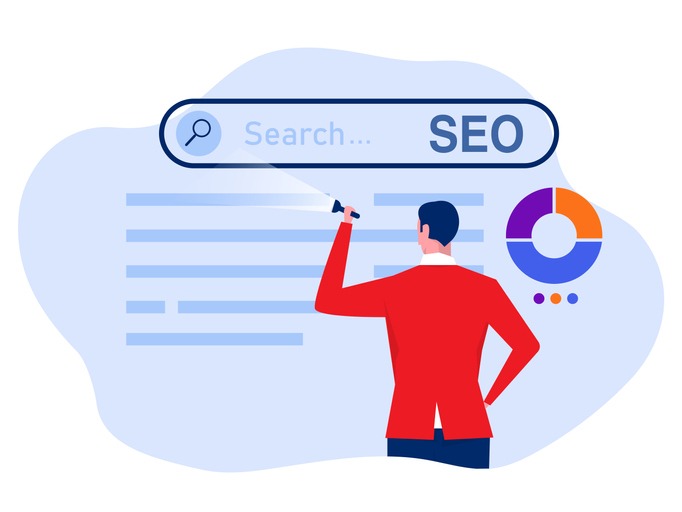
In the competitive digital landscape, achieving high visibility on search engines is crucial for attracting traffic to your website. search engine optimization (SEO) is the process of optimizing your website to rank higher in search engine results pages (SERPs). This guide provides an in-depth look at SEO, its significance, and practical strategies to enhance your site’s search engine performance.
What is Search Engine Optimization (SEO)?
Search Engine Optimization (SEO) involves optimizing various elements of your website to improve its visibility and ranking on search engines like Google, Bing, and Yahoo. The goal of SEO is to attract more organic (non-paid) traffic by making your site more appealing to both search engines and users.
Why SEO is Important
- Increased Visibility: Ranking higher in search results leads to greater visibility. Most users rarely go beyond the first page of search results, so being at the top is essential for attracting more visitors.
- Targeted Traffic: SEO helps draw in visitors who are actively searching for relevant keywords related to your business. This targeted traffic is more likely to convert into leads or sales compared to generic traffic.
- Cost-Effective: Unlike paid advertising, SEO offers a cost-effective solution for long-term success. While it requires an initial investment of time and resources, the ongoing costs are relatively low compared to continuous ad spend.
- Credibility and Trust: Higher search rankings are often associated with credibility and trustworthiness. Users tend to trust and engage more with top-ranking sites.
Core Components of SEO
- Keyword Research
- Objective: Identify the search terms and phrases that your target audience uses when looking for information related to your business.
- Tools: Use tools like Google Keyword Planner, Ahrefs, and SEMrush to find relevant keywords with good search volume and manageable competition.
- Implementation: Integrate these keywords naturally into your site’s content, including titles, meta descriptions, headers, and body text.
- On-Page SEO
- Title Tags: Create unique, descriptive title tags for each page, incorporating relevant keywords. Title tags are critical for both search engines and users.
- Meta Descriptions: Write engaging meta descriptions that summarize the page content and include target keywords. Meta descriptions can influence click-through rates from search results.
- Headings: Use headings (H1, H2, H3) to structure your content and include keywords. Headings help improve content readability and organization.
- Content Quality: Develop high-quality, informative content that meets the needs of your audience. Regularly update your content to keep it relevant and engaging.
- Internal Linking: Use internal links to connect related pages within your site. This enhances site navigation and helps search engines understand your site structure.
- Technical SEO
- Site Speed: Ensure that your website loads quickly. Fast loading times improve user experience and can positively impact search rankings.
- Mobile Optimization: Optimize your site for mobile devices, as a significant portion of web traffic comes from mobile users. A responsive design ensures that your site performs well on all devices.
- Site Structure: Develop a clear, organized site structure with an XML sitemap to help search engines crawl and index your pages effectively.
- URL Structure: Create clean, descriptive URLs that include relevant keywords and are easy to read. Avoid long, complex URLs.
- Off-Page SEO
- Backlinks: Obtain high-quality backlinks from authoritative websites. Backlinks are a major ranking factor and help establish your site’s authority and credibility.
- Social Media: Promote your content and engage with users on social media platforms. Social signals can influence search rankings and drive traffic to your site.
- Local Listings: Ensure your business is listed in relevant online directories and local listings to improve local search visibility.
- Local SEO
- Google My Business: Claim and optimize your Google My Business listing to improve visibility in local search results and on Google Maps.
- Local Keywords: Incorporate location-specific keywords into your content and meta tags to target local search traffic.
- Customer Reviews: Encourage and manage customer reviews on Google and other review platforms. Positive reviews can enhance your local reputation and impact search rankings.
Measuring SEO Success
To assess the effectiveness of your SEO efforts, monitor these key metrics:
- Organic Traffic: Track the volume of traffic coming from search engines. Increased organic traffic indicates improved SEO performance.
- Keyword Rankings: Monitor your site’s rankings for targeted keywords to evaluate the success of your optimization strategies.
- Bounce Rate: Analyze the percentage of visitors who leave your site after viewing only one page. A high bounce rate may indicate issues with content relevance or user experience.
- Conversion Rate: Measure the percentage of visitors who complete desired actions, such as making a purchase or signing up for a newsletter.
- Backlink Profile: Evaluate the quality and quantity of backlinks pointing to your site to understand your site’s authority and trustworthiness.
Conclusion
search engine optimization (SEO) is a vital component of digital marketing that can significantly enhance your website’s visibility, attract targeted traffic, and drive long-term success. By focusing on essential elements such as keyword research, on-page and technical optimization, off-page strategies, and local SEO, you can improve your search engine rankings and achieve your online goals. While SEO requires ongoing effort and adaptation, its benefits make it a valuable investment for any online presence.
Feel free to ask if you need further details or have specific questions about any aspect of SEO!